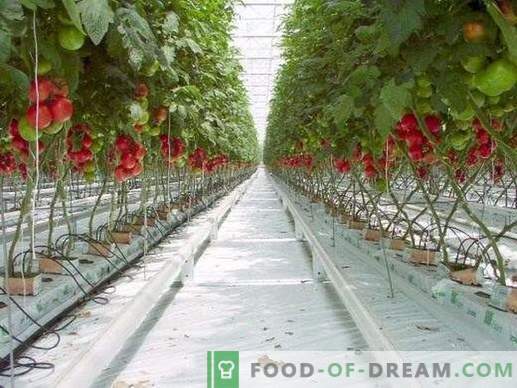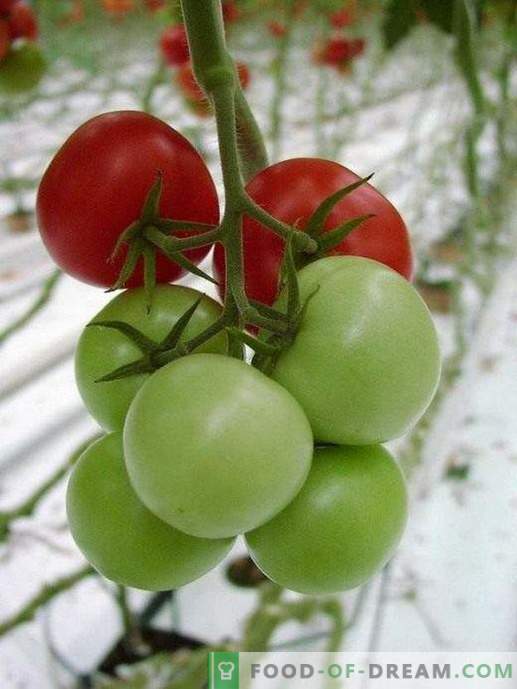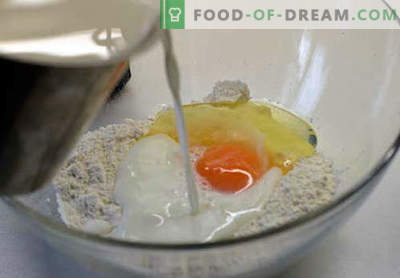It has become a habit to scold store tomatoes for lack of taste and smell. They are called “plastic”, “cardboard” and “grass-grass”. There are many versions explaining this fact. Someone talks about gene modification, someone about hydroponic growing technology. Let's see why store tomatoes are not so similar to those we ate in childhood.
Hydroponics is not to blame
First of all, we destroy the myth that hydroponics is to blame for the taste. Plants grown with hydroponics are real, natural and organic. There is nothing unusual in the composition of nutrient solutions that are fed to the roots of plants, there are no mythical steroids or secret supplements when using hydroponics. Experts confirm that the taste of vegetables grown with hydroponics cannot be distinguished from ordinary ones.

The biggest problem of tomato is ripening?
Nature provides that simultaneously with the ripening, redness, the formation of substances responsible for taste and aroma, the tomato begins to deteriorate. This is due to the synthesis of the enzyme destroying pectin, which leads to softening and loss of the shape of the fruit. In nature, it is necessary for the plant to disperse the seeds. The fruit becomes softer, creating an excellent environment for microorganisms, cracks, and loses its presentation. Separate the processes of maturation and damage is impossible.

You may have noticed that tomatoes are more unevenly colored, with green areas in the stalk area. However, such “ugly” tomatoes deteriorate too quickly, and therefore it is not profitable to sell them in the store.
Where do beautiful tomatoes come from in stores?
Photosynthesis in tomatoes regulate two genes - GLK1 and GLK2. Their functions partially complement each other, and the failure of any of them does not lead to disturbances in plant physiology. In the leaves, both genes work. In ripening fruits - only GLK2. His work in the area of the stem is higher, which leads to uneven ripening, when half of the fruit is already red, and some are still green.
For many years, the efforts of breeders all over the world have been aimed at producing “beautiful” varieties of tomatoes, the fruits of which are colored evenly and, accordingly, are stored longer without losing their shape. And once in the course of selection (note that genetic modification has nothing to do with this) the GLK2 gene “broke down”. This was determined by biologists from the United States and Spain, deciphering the genetic basis of such tomatoes.

In plants with spoiled GLK2, unripe fruits have a uniform pale green color and also redden uniformly. At the same time, due to the low level of photosynthesis, less sugars and other soluble substances are formed in them, which deprives the tomato of taste and aroma.
Breeders supported buyers.
The immature fruits of tomatoes with a non-working GLK2 gene have a uniform pale green color and are uniformly stained, retain their presentation for longer, and beautiful varieties with such a sign quickly captured the counters and fields. And we, as buyers, supported such varieties with a purse, preferring beautiful varieties to ugly ones. But at the same time photosynthesis stopped in the fruits of such tomatoes, they have less sugars and aromatic substances: tomatoes have lost their true taste.
Genetic engineering is able to fix tomatoes.
It is now known that a group of scientists from several universities - American, Spanish and Argentine - “added” a working version of the GLK2 gene to the tomato genome and “turned it on”. The results were successful: the new tomatoes were tastier, and the color uniformity remained.
The irony of fate is that genetic engineering, which we unreasonably blame the bad taste of tomatoes, was able to correct and improve what the breeders spoiled.
Maybe someday, when humanity understands its relation to gene technology, we will be able to see the delicious tomatoes in the stores. But the issue of security of such technologies is not the subject of this article.























